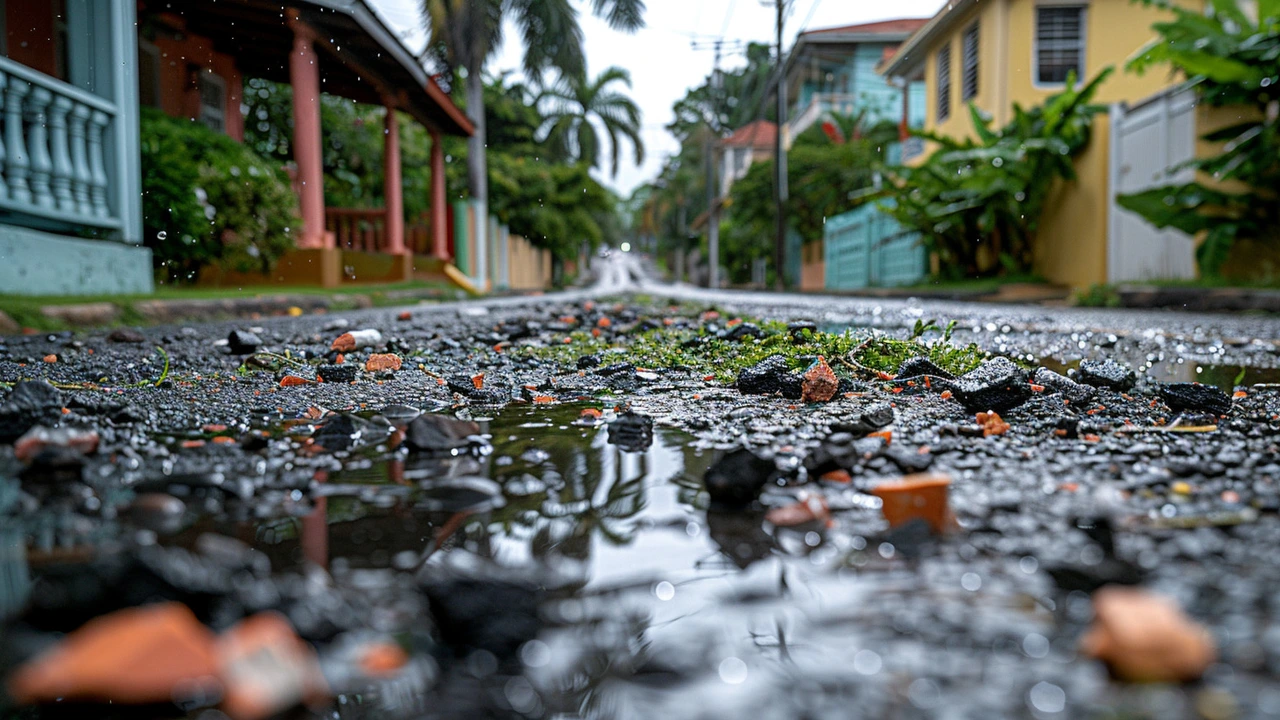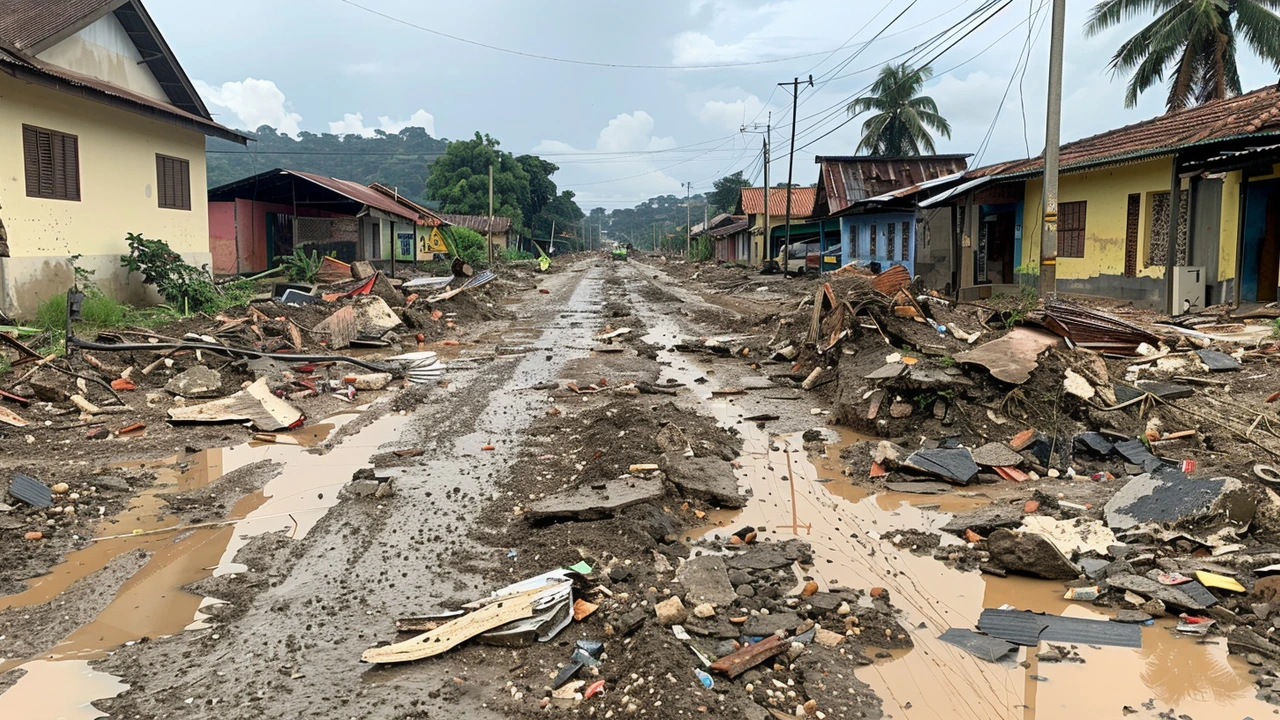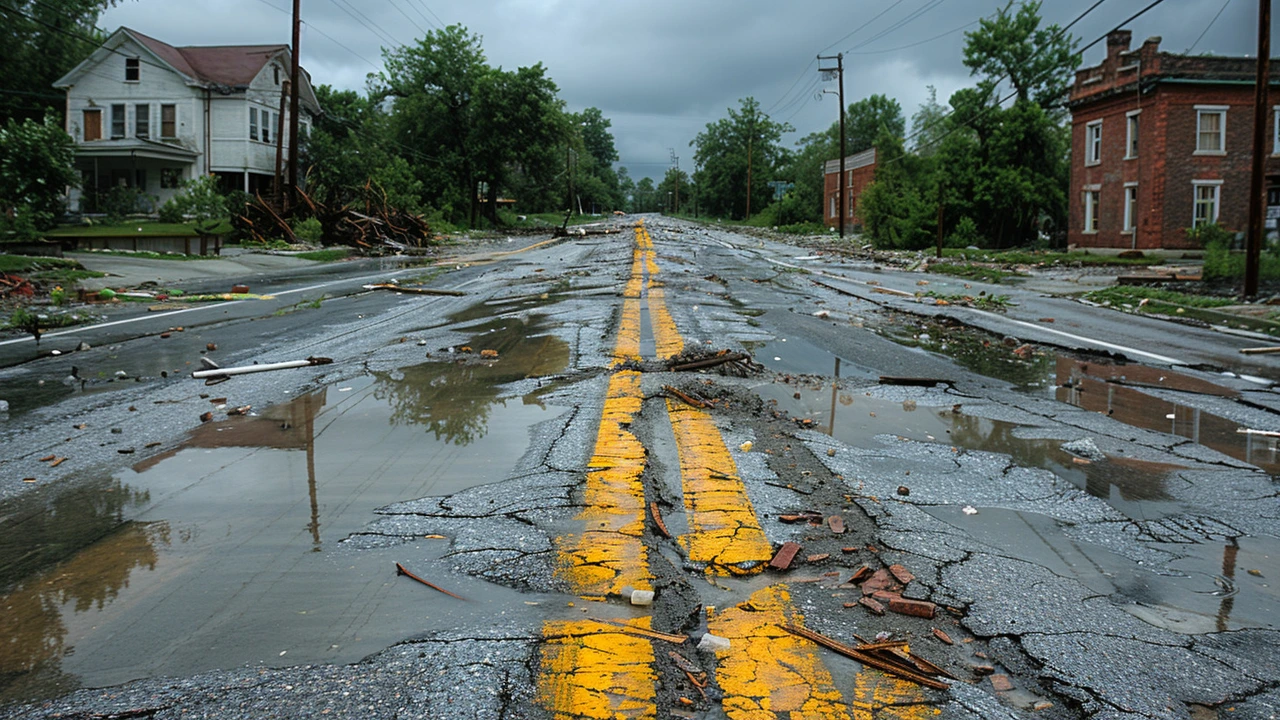Devastating Storm Strikes Kariega and Gqeberha
The residents of Kariega and Gqeberha have been left reeling after a severe storm ravaged the area, resulting in the loss of at least six lives. Among the casualties are an 18-year-old woman from Kabah and a 62-year-old man in Kariega. The community of KwaNobuhle has also been devastated, with four people losing their lives, including a three-year-old girl and three men aged 47, 62, and 41.
Widespread Flooding and Infrastructure Damage
The storm's heavy downpours led to extensive flooding, causing considerable damage to infrastructure and leading to power outages across the region. Over 1,100 residents were evacuated and relocated to safer areas, with many homes left uninhabitable by the rising waters. In response to the crisis, two Joint Operations Centres have been activated to coordinate emergency efforts and provide support to those affected.
Search and Rescue Operations
In a bid to manage the chaos, the South African National Defence Force (SANDF) deployed a helicopter to assist in search and rescue operations. Organizations such as Gift of the Givers and Rescue South Africa have been instrumental in supporting these efforts, providing crucial resources and manpower in the affected areas. The coordinated response has been essential in ensuring that the immediate needs of the displaced residents are met, and that ongoing search and rescue missions can continue effectively.
Weather Alerts and Public Safety
The South African Weather Services have maintained an orange level 6 alert, projecting more than 50 mm of rain in the coming days. This warning has heightened concerns among officials and residents alike, as the risk of further flooding and damage remains high. Nelson Mandela Bay mayor Gary Van Niekerk has expressed deep concern over the increasing number of fatalities and has urged residents to stay indoors as much as possible to ensure their safety.
Support and Aid Efforts
Gift of the Givers founder Dr. Imtiaz Sooliman has been at the forefront of coordinating emergency supplies from various centres to support the affected areas. The organization has mobilized swiftly to provide food, water, and other essential supplies to those who have been displaced by the storm. The collaborative efforts of local authorities, emergency services, and charitable organizations have been crucial in mitigating the impact of this natural disaster on the communities of Kariega and Gqeberha.

Impact on the Community
The storm has left a deep wound in the hearts of the Kariega and Gqeberha communities. Families are grappling with the loss of loved ones, and many residents are facing the daunting task of rebuilding their lives from the wreckage. The swift and coordinated response from both government and non-governmental organizations has provided much-needed relief and hope to those affected, but the road to recovery will be long and challenging.
As emergency workers continue to battle the elements to provide aid and support, the resilience and solidarity of the Kariega and Gqeberha residents stand as a testament to the human spirit in times of crisis. While the full scale of the damage is yet to be determined, the outpouring of support and the tireless efforts of rescue teams offer a glimmer of hope amidst the devastation.
Community Response
Amidst the chaos, numerous community members have stepped up to offer help and shelter to their neighbors. Makeshift shelters have been set up in schools, churches, and community centers to house those displaced by the storm. Volunteers are working round the clock to ensure that everyone receives the support they need during this difficult time.
The spirit of camaraderie and mutual assistance extends beyond the affected areas, with donations and messages of support pouring in from across the country. Various local businesses have also joined the relief efforts, providing food, blankets, and other necessities to those in need. This collective effort underscores the strength and unity of the South African community in the face of adversity.
Future Mitigation Efforts
The recent events have highlighted the need for improved disaster preparedness and response systems in the region. Authorities are now considering additional measures to bolster infrastructure and increase community awareness about the risks posed by severe weather events. These initiatives aim to reduce the impact of future storms and ensure that communities are better equipped to handle similar crises.
Environmental experts are also calling for increased investment in sustainable infrastructure projects that can withstand extreme weather conditions. This includes the construction of more resilient housing and the implementation of advanced flood management systems. By prioritizing these investments, officials hope to minimize future damage and protect vulnerable communities from the devastating effects of natural disasters.

Conclusion
The severe storm in Kariega and Gqeberha has brought about a significant loss of life and widespread destruction, casting a dark shadow over the region. The prompt response from emergency services and charitable organizations has provided much-needed relief and demonstrated the power of unity in times of crisis. However, the road to recovery will be long, and the need for ongoing support and resilience is paramount.
As the affected communities begin to rebuild, the lessons learned from this disaster will shape future efforts to safeguard lives and property from the increasing threat of severe weather events. The resilience of the people of Kariega and Gqeberha, combined with the continuous support of the broader South African community, will be crucial in helping them navigate this challenging period and emerge stronger in the face of adversity.







Kashish Narula
June 3, 2024 AT 20:03My heart goes out to everyone affected by the storm, and I’m really grateful for the way the community has come together to support one another. It’s amazing to see volunteers stepping up, shelters opening, and charities delivering aid so quickly. Let’s keep the lines of communication open and respect each other’s space as we recover.
smaily PAtel
June 3, 2024 AT 20:40According to the meteorological data, an orange level‑6 alert typically corresponds to sustained rainfall exceeding 50 mm, which aligns perfectly with the observed flooding patterns in Kariega and Gqeberha; the hydraulic models predict flash floods under such conditions, and the infrastructure there was evidently not built to withstand this magnitude of water flow. Moreover, the deployment of a SANDF helicopter significantly improves the odds of locating stranded individuals, as aerial rescues have a success rate upwards of 85 % in comparable scenarios. It’s crucial that future urban planning incorporates these statistical insights to mitigate similar disasters.
Hemanth NM
June 3, 2024 AT 22:03The storm hit hard. People are evacuating fast. Aid is arriving now.
rin amr
June 3, 2024 AT 23:26One cannot help but admire the sheer audacity with which our emergency services have orchestrated a symphony of relief-each rescue helicopter a note, each volunteer a chord, resonating through the devastated neighborhoods. The coordinated efforts of Gift of the Givers, Rescue South Africa, and local authorities demonstrate a level of operational excellence that rivals the most sophisticated crisis management frameworks studied in graduate programs. While the media may focus on the tragedy, the underlying narrative is one of resilient ingenuity and collective resolve.
Jai Bhole
June 4, 2024 AT 00:50It’s clear that this storm exposed the frail foundations of our nation’s disaster readiness, a reality that can’t be ignored if we truly want to protect our people. As a proud citizen, I firmly believe that we must invest in home‑grown solutions-local engineering, community‑driven early warning systems, and a self‑sufficient supply chain-because relying on foreign aid is just not gonna cut it in the long run. The path forward demands a united front, defiantly standing up against complacency and taking action now.
rama cs
June 4, 2024 AT 02:13In the wake of this catastrophic meteorological event, one must engage in a dialectical examination of the systemic vulnerabilities that precipitated such extensive human and infrastructural loss. The confluence of inadequate urban drainage architecture, insufficiently calibrated hydrological modeling, and a paucity of resilient housing stock constitutes a triad of failure modes that are emblematic of broader developmental deficits. From a sociotechnical perspective, the amplification of these deficits is further exacerbated by the lag in propagation of real‑time data analytics within municipal response frameworks. Consequently, the emergent pattern of delayed evacuation orders and suboptimal resource allocation can be interpreted as a failure of adaptive governance mechanisms.
Furthermore, the deployment of interdisciplinary rescue modalities-such as the integration of airborne SAR (Search and Rescue) units with ground‑based logistical hubs-demonstrates a commendable but insufficiently scalable paradigm. While the immediate relief operations are laudable, the post‑disaster reconstruction phase necessitates a paradigm shift toward anticipatory design, embedding climate‑resilient infrastructure within the built environment. This includes the implementation of permeable pavement systems, elevated utility corridors, and flood‑plain zoning reforms, which collectively function as a mitigating buffer against hydrological extremes.
Moreover, the socio‑economic stratification observed in the displacement patterns underscores the imperative for equity‑centric policy interventions. Vulnerable cohorts, particularly those residing in informal settlements, experience disproportionate exposure, thereby necessitating targeted socio‑financial safety nets and participatory planning processes. The synergistic engagement of community stakeholders, municipal engineers, and academic researchers can foster a robust feedback loop, thereby enhancing the fidelity of future risk assessments.
In sum, the tragic outcomes of the Kariega and Gqeberha storm serve as a crucible for introspection and systemic overhaul. By embracing a holistic, evidence‑based approach that synthesizes technological innovation with inclusive governance, the region can transform this calamity into a catalyst for resilient regeneration.
Monika Kühn
June 4, 2024 AT 03:36Oh great, another storm and we’re all supposed to just “stay indoors” like it’s a weekend Netflix binge.
Surya Prakash
June 4, 2024 AT 05:00It’s disappointing how quickly we forget the lessons from past floods.